The Maker The Charles Causley Literary Blog
Memories of Charles Causley, by David Werran
On a bitterly cold and snowy day in February 1947 my family relocated back to Launceston from London. I was quickly enrolled in the old National School in New Road and arriving midterm, with what was perceived as a Cockney accent, I became a curiosity and the object of unwanted attention for a while. But I soon settled in and towards the end of that year we had a new teacher – Charles Causley fresh from teaching school.
Charles was a revelation. All his lessons were enjoyable, particularly history which he brought alive and gave me an everlasting interest in the subject. But he was no wimp – firm yet fair he would not tolerate misbehaviour or rudeness.
There are many examples of his understanding of children and the empathy he showed to others. Here are two. After one Christmas I remember he asked the class to write a short essay on how they spent the holiday. The stories were then read out in class and one boy, Brian Martin, gave a glowing account of his Christmas day and the presents he had received which was greeted with ridicule by the class as everyone knew he lived in poverty. Charles reacted with anger pointing out that Brian’s essay was a well written account and that everyone had something to offer – in Brian’s case it was his obvious intelligence and imagination. Charles’s famous poem “Timothy Winters” was based largely on Brian – a fact he confirmed to me in later years.
Another example was a classmate whose name was Rockey – I can’t remember his forename – who was tragically killed by a car whilst cycling at the top of St Stephen’s hill. Charles announced his death to the class one morning, and the sad occurrence formed the basis of his haunting poem, “Death of a Pupil”.
During 1948/49 my mother fell ill and subsequently died and Charles was very considerate. But my work deteriorated to such a point that he took me aside and confided that at my age his father had died and encouraged me to throw myself into work for Mum’s sake – which I did passing the 11 plus and entering Launceston College the following year.
After I left the National School, I kept in touch with Charles and one day had a chance meeting with him in the Square just after he had published his only work of prose “Hands to Dance” – this would have been in 1951. We talked about the stories in his book, which were mainly based on his wartime experiences, and plans for a further book that might focus on Launceston. Pointing to the plate glass window of Hicks (now Spec Savers) that sported a couple of bullet holes, he said not only was that evidence of the well-known mutiny of African American soldiers in 1943, but the real story was of the evil racial segregation and Jim Crow laws that still persisted in the USA. This spurred my interest in the mutiny that, in time, I conveyed to my daughter Kate, a journalist and TV producer, who after considerable research authored a book – “An American Uprising in Second World War England: Mutiny in the Duchy”, published by Pen and Sword. This book created interest on both sides of the Atlantic to the extent that a plaque unveiling at the White Hart Hotel is planned on the 80th anniversary of the event in September 2023 – all due to that talk with Charles all those years ago
In the summer of 1955, at the age of 16, I decided to leave school and asked the headmaster, Harold Spencer Toy – or ‘old man Toy’ as us boys called him – for a reference. I did not have a particularly good relationship with the headmaster; indeed, it was a decidedly frosty one arising from my earlier decision to resign from the school orchestra – his great passion – when I realised I had no musical talent. The reference I was handed was bland to the extent of uselessness. So, I sought Charles’ advice who tore it up and wrote one himself which served me well. Charles, I discovered, was deeply hostile to Toy – possibly due to his own unhappy experiences at the College in pre-war days – any mention of Toy’s name would invite his instant ire.
Finding employment after school proved problematical so I sat the civil service examination and, whilst awaiting the results, Charles arranged an interview with Freddie Grisewood, then a well-known presenter/producer at BBC Bristol. The job on offer was to be in the sound effects department but, in the event, I contracted flu, was unable to attend and then received the news that I had passed the civil service exam and was offered a post in Bath which I accepted. I have often wondered what might have ensued had I attended that BBC interview, but Charles’s efforts on my behalf was typical of his kindness.
In February 1957, Charles invited me to a symposium of poetry at the Octagon Rooms, Bath – a grand gathering with presentations and readings from a number of famous poets including Siegfried Sassoon to whom I was introduced. Charles, of course, was the very centre of attention but despite this he was at pains to ensure I was not left out of the proceedings and said, whether he meant it or not, that I was a welcome antidote to the ‘culture vultures’.
Over the years we kept in contact through our annual holidays to Cornwall when we would call in at Launceston to visit family and Charles. (Kate would have been around 12 years old when she first met him and last visited him when he was resident at Kernow’s House). Every now and then he would send me postcards from various foreign locations – one I recall was from Indonesia where he said he gave a reading in Jajce followed by a small earthquake!
In the summer of 1999 we moved as a family back to Launceston and from then until shortly before his demise we would frequently take him to lunch, sometimes at my home and to his favourite haunts – Crackington Haven, Trebarwith, the Springer Spaniel and the Harris Arms (sadly, no more) at Portgate.
Charles had many friends – I am privileged to have been one of them








